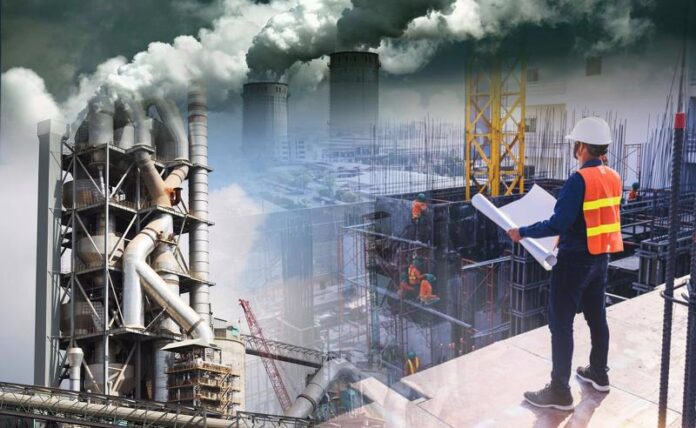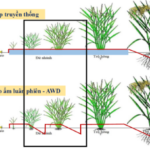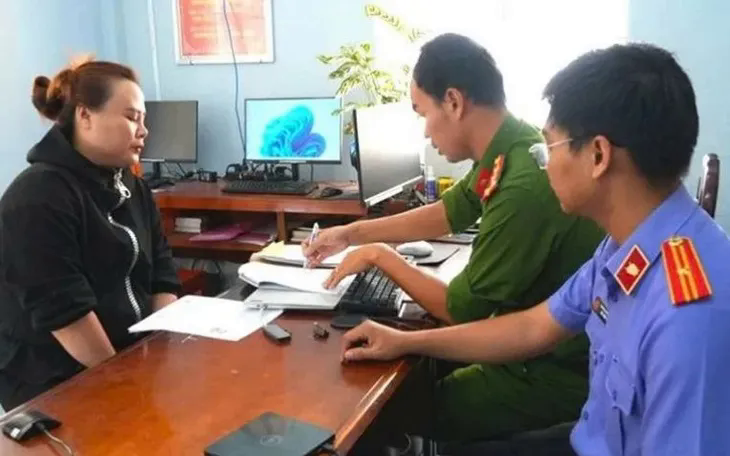The construction and promulgation of the Decree aim to further institutionalize the views and policies of the Party and the State’s laws on greenhouse gas emissions reduction and ozone layer protection. It also aims to promote the domestic carbon market’s development, facilitating localities, businesses, organizations, and individuals to contribute to national greenhouse gas emissions reduction efforts through carbon credit-generating programs, projects, and activities for domestic and international exchange. Ensuring harmony between climate change response legal provisions is crucial.
AMENDING AND SUPPLEMENTING PROVISIONS TO ENHANCE EMISSIONS INVENTORY AND QUOTA ALLOCATION
In recent times, the Government and the Prime Minister have vigorously directed ministries, sectors, and localities to strengthen climate change response measures and implement greenhouse gas emissions reduction measures. These efforts align with the nation’s emissions reduction targets under the nationally determined contributions (NDCs) and strive towards achieving net-zero emissions by 2050. Greenhouse gas emissions inventory is a crucial task for sectors, fields, and emitting entities to meet Vietnam’s emissions reduction goals.
During the implementation of Decree No. 06/2022/NĐ-CP, the Ministry of Natural Resources and Environment (now the Ministry of Agriculture and Environment) received proposals from agencies, organizations, businesses, and experts suggesting more specific provisions on greenhouse gas emissions inventory, emissions quota allocation, carbon credit management, and carbon market development. Some adjustments were recommended to facilitate agencies, organizations, and businesses in implementing greenhouse gas emissions reduction policies and protecting the ozone layer.
In the initial phase of quota allocation implementation, considerations will be made to provide businesses with room for growth and adaptation. Large emitters in the three sectors of thermal power, steel production, and cement production will be allocated quotas. The next phase will involve setting quotas to achieve higher emissions reduction targets. More than 100 facilities will be allocated quotas in the first phase, accounting for approximately 40% of total greenhouse gas emissions from facilities required to conduct emissions inventory according to the list promulgated by the Prime Minister.
Specifically, Decree No. 119/2025/NĐ-CP has amended and supplemented numerous articles and provisions of Decree 06. Regarding provisions on strengthening greenhouse gas emissions inventory, verification of inventory results, and verification of emissions reduction results, the Decree has added provisions on data collection, calculation of greenhouse gas absorption levels in ecological regions and by each province or centrally-run city with forests. These are included in the sectoral emissions inventory report at points b and c, Clause 3, Article 8.
Amendments and supplements have been made to provisions on the verification of greenhouse gas emissions inventory results and the verification of emissions reduction results. The Ministry of Agriculture and Environment has accepted suggestions from agencies and organizations to continue improving the regulations towards enhancing decentralization and authority delegation in state management. The Decree now clearly defines the objects, responsibilities, and contents of verification for emissions reduction and emissions inventory verification at the facility, sectoral, and national levels.
Accordingly, sectoral emissions inventory verification is conducted by sector-managing ministries based on the following contents: completeness of inventory content, information, and data; appropriateness in identifying emission sources and carbon sinks; suitability of the applied greenhouse gas inventory methods, emission factors, quality control methods, and assurance of the quality and information system of greenhouse gas emissions data by the sector-managing ministry; and evaluation of the accuracy and reliability of emissions inventory results.
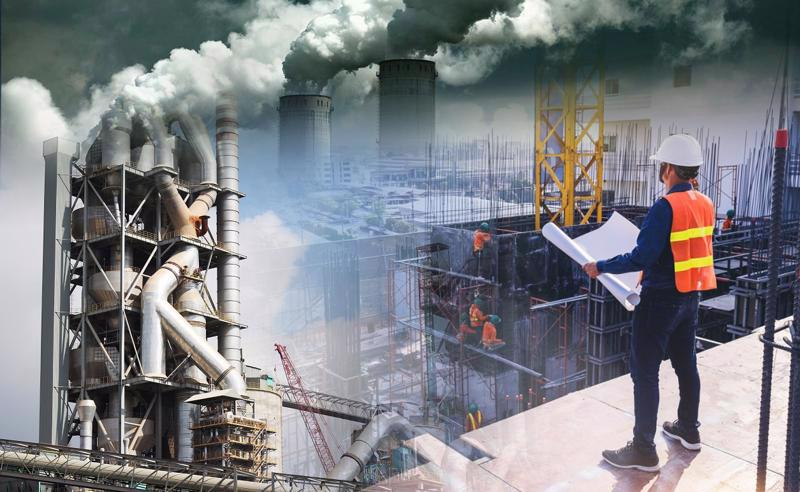
The verification of facility-level emissions inventory is organized by the provincial People’s Committees. They will receive, review, and synthesize the emissions inventory results of facilities in their respective localities and send them to the Ministry of Agriculture and Environment and the sector-managing ministries. The Ministry of Agriculture and Environment will provide detailed guidance on implementation. The Decree also stipulates a more detailed verification process for facilities allocated with emissions quotas compared to those not allocated with quotas.
The Decree stipulates that the entity verifying the emissions inventory results and emissions reduction results is an organization granted a certificate of registration for conformity assessment and confirmation activities according to the law on business conditions regarding conformity assessment services.
The Decree does not set rigid targets for greenhouse gas emissions reduction under the NDCs for sectors, as the NDCs are updated according to international regulations. The emissions reduction targets for sectors are approved by the Prime Minister within the national NDC to ensure flexibility when updating the NDCs. Therefore, Appendix I, which details the sectoral emissions reduction targets up to 2030, is abolished.
Regarding provisions on emissions quota allocation, the Decree has supplemented the method for determining emissions quotas for emitting facilities allocated with quotas and added a roadmap for quota allocation with three phases: 2025-2026, 2027-2028, and 2029-2030.
The sector-managing ministries are responsible for synthesizing and proposing the list of facilities and their respective allocated quotas annually, submitting them to the Ministry of Agriculture and Environment for synthesis and presentation to the Prime Minister for approval of the total emissions quota. Based on the total emissions quota approved by the Prime Minister, the Ministry of Agriculture and Environment, in coordination with relevant sector-managing ministries, will allocate quotas to the facilities.
DEVELOPING THE CARBON MARKET, MECHANISMS FOR QUOTA EXCHANGE AND CARBON CREDIT OFFSET WITHIN THE COUNTRY AND INTERNATIONALLY
The Decree clarifies the objects of emissions quota exchange and carbon credit exchange stipulated in Article 16 of Decree No. 06/2022/NĐ-CP. It also supplements content on the National Registry System for emissions quotas and carbon credits to serve management purposes.
The National Registry System for emissions quotas and carbon credits is a system that integrates technical infrastructure, information technology, software, and data to manage, operate, update, and exploit information on the ownership of emissions quotas and carbon credits. It also handles activities related to borrowing, repayment, transfer, and offsetting of emissions quotas.
Additionally, the Decree elaborates on emissions quota and carbon credit exchange activities in Article 19: the buying and selling of emissions quotas are conducted through order matching on the Carbon Exchange or through agreement; the buying and selling of carbon credits to offset excess emissions are conducted through order matching on the Carbon Exchange; and the repayment, transfer, and borrowing of emissions quotas are carried out on the National Registry System.
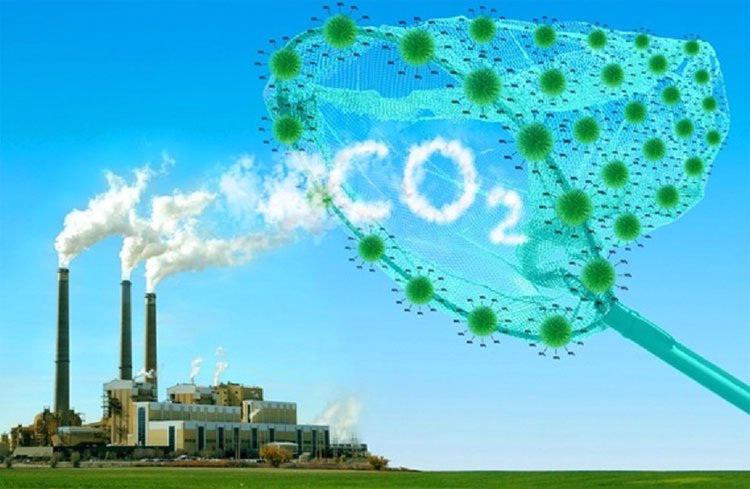
The Decree also details the mechanisms for domestic carbon credit exchange and offset in Article 20, including administrative procedures for approving methodologies, approving projects, and issuing carbon credits. The method for generating carbon credits applicable to the domestic carbon credit exchange and offset mechanism is the calculation of the reduction in emissions or absorption of greenhouse gases by the project compared to the emissions or absorption when the project is not implemented.
The roadmap for developing and launching the domestic carbon market is based on the content of the Project for Establishing and Developing the Carbon Market. Accordingly, the market will be piloted from now until the end of 2028 and officially operated from 2029.
Currently, many countries and international partners are interested in investing in projects and activities that reduce greenhouse gas emissions and generate carbon credits in Vietnam. This can be done through cooperation agreements under Article 6 of the Paris Agreement or through agreements to purchase carbon credits from activities related to forest development and protection, technology improvement, energy saving, and renewable energy development. This raises the need for legal provisions governing project registration, carbon credit issuance for projects, and approval for international carbon credit transfer.
The transfer of these credits, according to the Paris Agreement, requires the written approval of the transferring country. These regulations also aim to domesticate the provisions of the Paris Agreement, given that there have been some guidelines for implementing Article 6 of the Paris Agreement at COP29.
The Decree also presents a list of measures and activities to encourage greenhouse gas emissions reduction for projects under the international carbon credit exchange and offset mechanism to facilitate bilateral cooperation. This is based on a review of emissions reduction measures supported by the international community in the NDCs.
The Decree simplifies the administrative procedure for confirming the use of carbon credits to achieve voluntary emissions reduction targets. Organizations and individuals who request confirmation of the amount of carbon credits used to achieve voluntary emissions reduction targets will automatically be confirmed on the National Registry System for emissions quotas and carbon credits without submitting a proposal.
Additionally, a new administrative procedure has been added for registering the conversion of programs and projects under the Clean Development Mechanism (CDM) within the framework of the Kyoto Protocol to the carbon credit exchange and offset mechanism stipulated in Article 6.4 of the Paris Agreement.
SUPPLEMENTING PROVISIONS ON OZONE LAYER PROTECTION
The Decree supplements the list of prohibited substances for production and import, including ozone-depleting substances that have been completely phased out and some substances no longer used in specific application fields. This is in line with the practical situation and the experience of countries worldwide in implementing the Montreal Protocol on Substances that Deplete the Ozone Layer.
The Decree also supplements the roadmap for managing and phasing out controlled substances contained in equipment, products, or used to produce equipment and products to effectively manage equipment and products containing controlled substances with high global warming potential. This roadmap aligns with the contents of the National Plan on Managing and Phasing Out Ozone-Depleting Substances and Controlled Greenhouse Gases, which has been approved by the Prime Minister.

Amendments have been made to the regulations on the responsibilities of organizations in collecting, recycling, and treating controlled substances contained in equipment and products. Accordingly, manufacturers and importers of equipment and products containing controlled substances or produced from controlled substances with a rated cooling capacity of less than 26.5 kW (90,000 BTU/h) or an electrical capacity of less than 40 kW will have to implement the collection, recycling, and treatment of controlled substances from January 1, 2028.
For equipment and products with a rated cooling capacity of 26.5 kW (90,000 BTU/h) or higher and industrial refrigeration equipment with an electrical capacity of 40 kW or higher, the collection, recycling, and treatment of controlled substances are the responsibility of the owners.
The Decree has also simplified two existing administrative procedures. All administrative procedures are conducted entirely online through the National Public Service Portal.
The Dwindling Profits of the Maritime Transport Industry
The impending IMO (International Maritime Organization) agreement on carbon taxation will have a significant financial impact on Vietnamese shipping companies. With the new regulations, vessels will be charged an additional fee of nearly 10 million VND for every ton of CO2 emitted beyond the permitted threshold. This development is set to drastically increase operational costs and eat into the profits of these businesses.
“20,000 Hectares of Rice Fields in Nghe An Embrace Innovative Farming: A Step Towards Greener Rice for Global Palates.”
“The innovative alternate wetting and drying irrigation model has proven its success in Nghe An province, with over 20,000 hectares of land now utilizing this method. This sustainable practice has led to a remarkable reduction of over 50% in greenhouse gas emissions and has also conserved water resources, boosted rice yields, and created opportunities for farmers to increase their income through carbon credits and the export market for this ‘green rice’.”
Unlocking Emission Reduction Potential: Generating Carbon Credits Through AWD Irrigation Technology in Rice Cultivation
With the potential to expand its agricultural land in a climate-friendly direction, provinces like Nghe An can develop a system to verify emission reductions from alternate wetting and drying (AWD) irrigation technology models. This step-by-step approach establishes a foundation for carbon credit trading in agriculture, paving the way for a green financial mechanism that attracts investment to the sector. It also lays the groundwork for formulating agricultural carbon credit policies.

